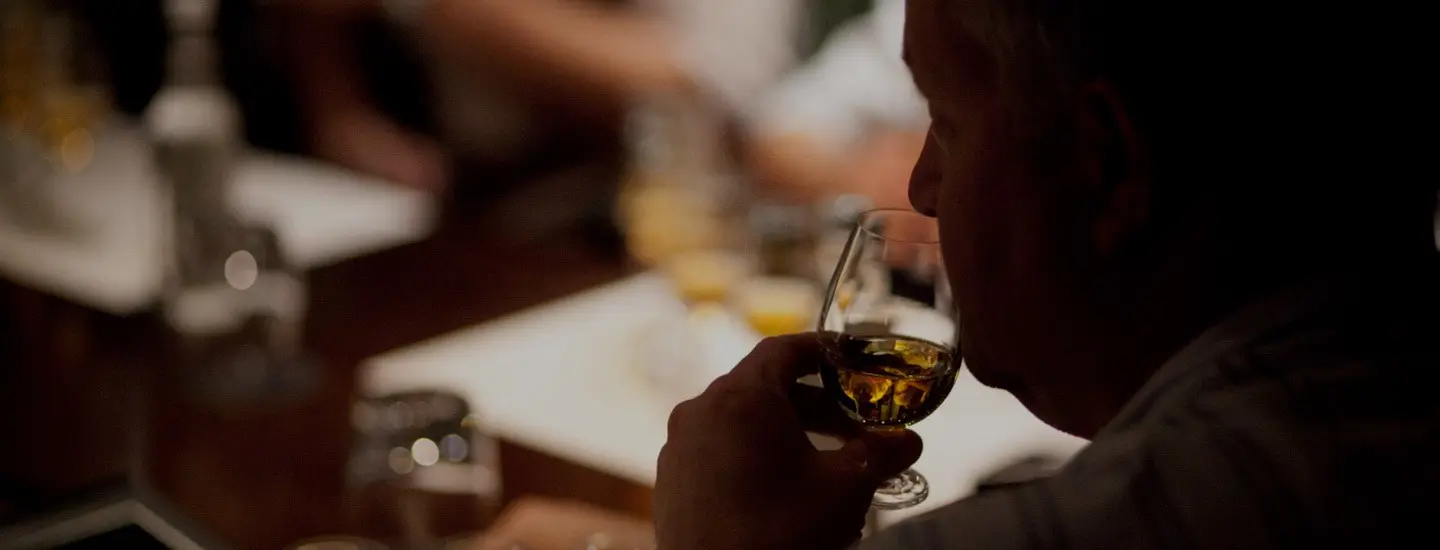Ever wondered how whisky enthusiasts seem to unlock an entire world of flavors in a single sip? Welcome to the fascinating art of whisky tasting! Whether you’re new to whisky or looking to refine your palate, this guide will walk you through the essentials of tasting whisky like a pro, all while keeping it enjoyable and approachable.
What You'll Need to Get Started
Before we dive into the nuances of whisky tasting, let’s ensure you have everything you need:
- A Whisky Glass: A tulip-shaped glass (like a Glencairn) is ideal as it captures the aromas, enhancing your tasting experience.
- Room Temperature Water: A few drops can open up the whisky’s flavors. More on that later!
- Neutral Palette: Avoid strong flavors before tasting. No spicy food, no strong coffee—keep it simple.
Step 1: Look at the Whisky
First things first, let’s start with our eyes. Pour your whisky into the glass and hold it up against the light.
- Color: Whisky can range from pale gold to deep amber. The color can give you hints about its age and the type of cask it was matured in. For example, a darker whisky might suggest more time in an oak barrel.
- Legs: Give the glass a gentle swirl. The streaks that form on the inside of the glass (known as “legs” or “tears”) can indicate the whisky's viscosity. Slow-moving legs often suggest a higher alcohol content or a more full-bodied whisky.

Step 2: Nose the Whisky
Now, let’s get our sense of smell involved—this is where the magic begins!
- The First Sniff: Place your nose at the rim of the glass and take a gentle sniff. Don’t rush it—whisky aromas can be complex and layered.
- What Do You Smell?: You might detect vanilla, caramel, spices, or even a hint of smokiness. There’s no right or wrong answer here; it’s all about what you personally experience.
- The Water Trick: Add a few drops of water and sniff again. Notice how the aromas evolve and new notes emerge—like unlocking a second chapter in a book.

Step 3: Taste the Whisky
Finally, the moment you’ve been waiting for—time to taste!
- The First Sip: Take a small sip and let it coat your tongue. Resist the urge to swallow immediately; give the whisky a chance to reveal its story.
- The Flavor Profile: Notice the initial flavors (the “attack”), the development as the whisky spreads across your palate, and the finish as it goes down. Does it remind you of fruits, spices, oak, or smoke?
- With Water: If the whisky is particularly strong or complex, adding a drop or two of water can help open up its flavors. This can make certain notes more pronounced, offering a new dimension to your tasting experience.

Step 4: The Finish
The finish is the lingering taste that stays with you after you’ve swallowed the whisky. It can be short and sweet or long and warming.
- Notice the Aftertaste: Does the flavor linger on the back of your tongue? Is it warm and spicy or cool and smooth? A long, pleasant finish is often a sign of a well-crafted whisky.
Common Whisky Terms Explained
- Single Malt: Whisky made from malted barley in a single distillery.
- Blended Whisky: A mix of different whiskies, often from various distilleries.
- Peaty: Describes a whisky with a smoky flavor, often associated with Scotch from Islay.
The Journey of Whisky Tasting
Whisky tasting is more than just sipping a drink; it’s about exploring history, craftsmanship, and the artistry behind each bottle. As you continue to taste, you’ll develop a deeper appreciation for the subtle differences between whiskies.
Actionable Takeaways:
- Experiment with Water: See how your favorite whisky changes with a few drops of water.
- Try a Whisky Flight: Compare different whiskies side by side to better understand their unique profiles.
- Keep a Tasting Journal: Note down what you taste, smell, and feel. It’s a great way to track your journey and preferences.
Final Thoughts
Tasting whisky is a journey, one that becomes richer with each experience. Whether you’re sharing a dram with friends or enjoying a quiet evening alone, the key is to savor the moment. Remember, there’s no rush and no right or wrong—just you, your whisky, and the adventure ahead.
Ready to embark on your whisky-tasting journey? Start with the Balvenie DoubleWood 12 Year Old Single Malt Whisky for its rich, smooth finish, or explore the intricate flavors of the Nikka Taketsuru Pure Malt 17 Year Old. Both are perfect choices for refining your palate as you dive into the art of whisky tasting.

About the Author
Joseph Luk is the founder of Cuvees.com (12 Bottles Company Limited), established in 2009, where he passionately curates unique wines, sakes, and spirits from around the world. In addition to his work at Cuvees.com, he manages 13 Degrees Wine Cellars, where he manages the storage solution for wine collectors. Joseph is dedicated to sharing his knowledge and love for beverages with a broader audience. When he’s not exploring the latest trends in the beverage industry, you can find playing tennis or listening to Audible. You can find him on LinkedIn.